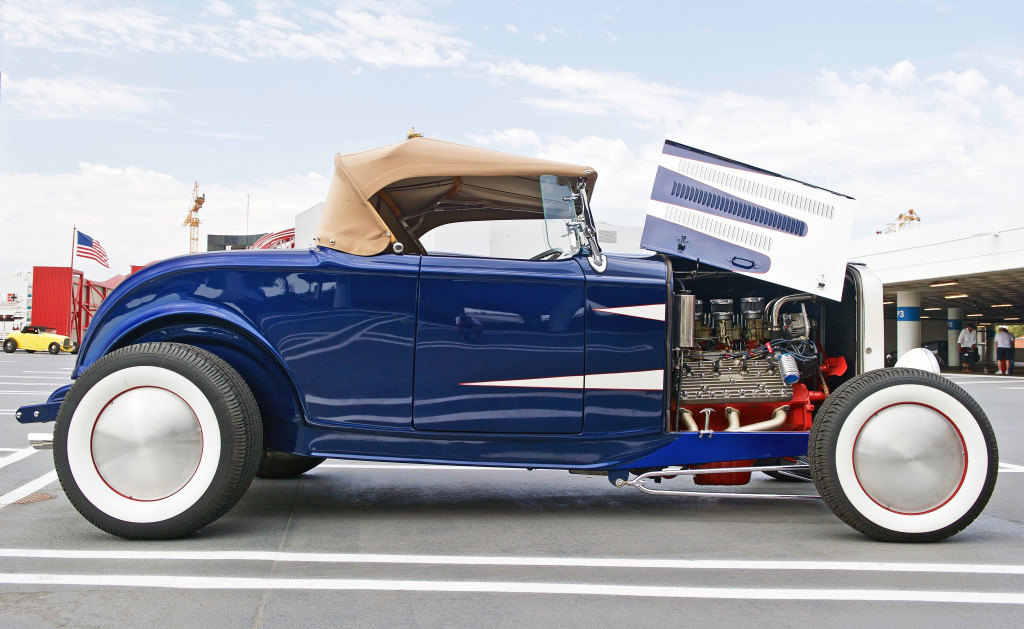- Create a plan for the restoration process that includes a checklist of required materials and tools.
- Source reputable mechanics and car parts specific to make, model, and year of production.
- Invest in high-quality tools and access reliable sources of information.
- Work with professionals when necessary, pay attention to details, and monitor parts and materials.
- Enjoy the process, engage with enthusiasts, and take pride in your masterpiece!
Vintage cars have a rich history and provide a glimpse into a bygone era. Restoring an old car to its former glory is a rewarding experience that requires patience, perseverance, and expert knowledge.
While it may seem daunting to tackle such a project, the result is a masterpiece that can be enjoyed for years. So if you are a vintage car collector looking to revive an old car, you’ve come to the right place!

Start With a Plan
Before you even begin restoring your vintage car, you should create a plan of action. This includes assessing the car’s condition and setting a timeline for the restoration process. The plan should also include a checklist of materials, tools, and expertise required for the restoration. This will help you stay organized and focused on the end goal.
Source Items and Services
Once you have your plan, you can start sourcing the items and services needed for the restoration. Make sure to find a reputable mechanic who specializes in vintage cars and has ample experience with restorations. Also, look for car parts specific to your make, model, and year of production. This will help ensure that everything fits correctly and can be safely installed.
Stay on Track
It’s also essential to create a budget for the restoration project. This will help you stay on track financially so that you don’t overspend or go into debt trying to restore your vintage car. Make sure to factor in all costs, such as labor, materials, tools, shipping, and storage.
Make Sure You Have the Right Tools
Restoring a vintage car requires a variety of tools that are essential to the process. These include basic hand tools such as hammers, wrenches, and screwdrivers, as well as specialized equipment such as sandblasters, paint guns, and engine cranes.
High-Quality Tools
Investing in high-quality tools will save you time and money in the long run and ensure a better result. You should also have access to reliable sources of information like manuals and online forums that can offer advice on how to properly use the tools available. Finally, ensure that you have plenty of storage space for all the parts and supplies you’ll need as your project progresses. This will help keep everything organized and ensure a smooth restoration process.
Work with Professionals
Working with professionals is also essential, especially when working on tasks requiring expertise. When working on the windows and windshield, you should also work with a shop offering reliable auto glass repair services. The shop should have the knowledge and expertise to provide the glass repairs you need for the car. Similarly, for tasks such as painting and machine work, you must find a reliable shop with experienced technicians who can handle the job correctly.
Don’t Skimp on the Details
Restoring a vintage car involves paying attention to the details. This includes preserving original parts, sourcing period-correct replacements, and using authentic paints and finishes. It’s important to research the specific make and model of the car to accurately restore it to its original specifications. This attention to detail will not only increase the value of the car but also ensure its authenticity.
Monitor Parts and Materials
One way to ensure authenticity is to keep track of all parts and materials used in the restoration. This allows for an accurate record of the car’s history, which can be invaluable when it comes time to sell or insure the vehicle. Additionally, this paper trail will help authenticate the car if it ever needs to be verified as a genuine vintage model.
Enjoy the Finished Product
Once the restoration is complete, you can sit back and enjoy your newly restored vintage car. The hard work and dedication will have been worth it, and you will be proud of your masterpiece. And with regular maintenance, you can ensure that your car stays in top condition for years!

Enjoy the Process
Restoring a vintage car can be a long and challenging process, but it’s also incredibly rewarding. Take the time to enjoy the process and appreciate the craftsmanship and history behind the car.
Engage with Enthusiasts
Engage with other vintage car enthusiasts, attend car shows, and seek resources to help you become a better restorer. At the end of the process, you’ll have a restored car that will be the envy of any vintage car collector!
Restoring a vintage car requires knowledge, patience, and passion. Following the tips above, you can restore an old car to its former glory and experience the thrill of owning a piece of automotive history. Remember to enjoy the process and take pride in the craftsmanship and history of the car.

